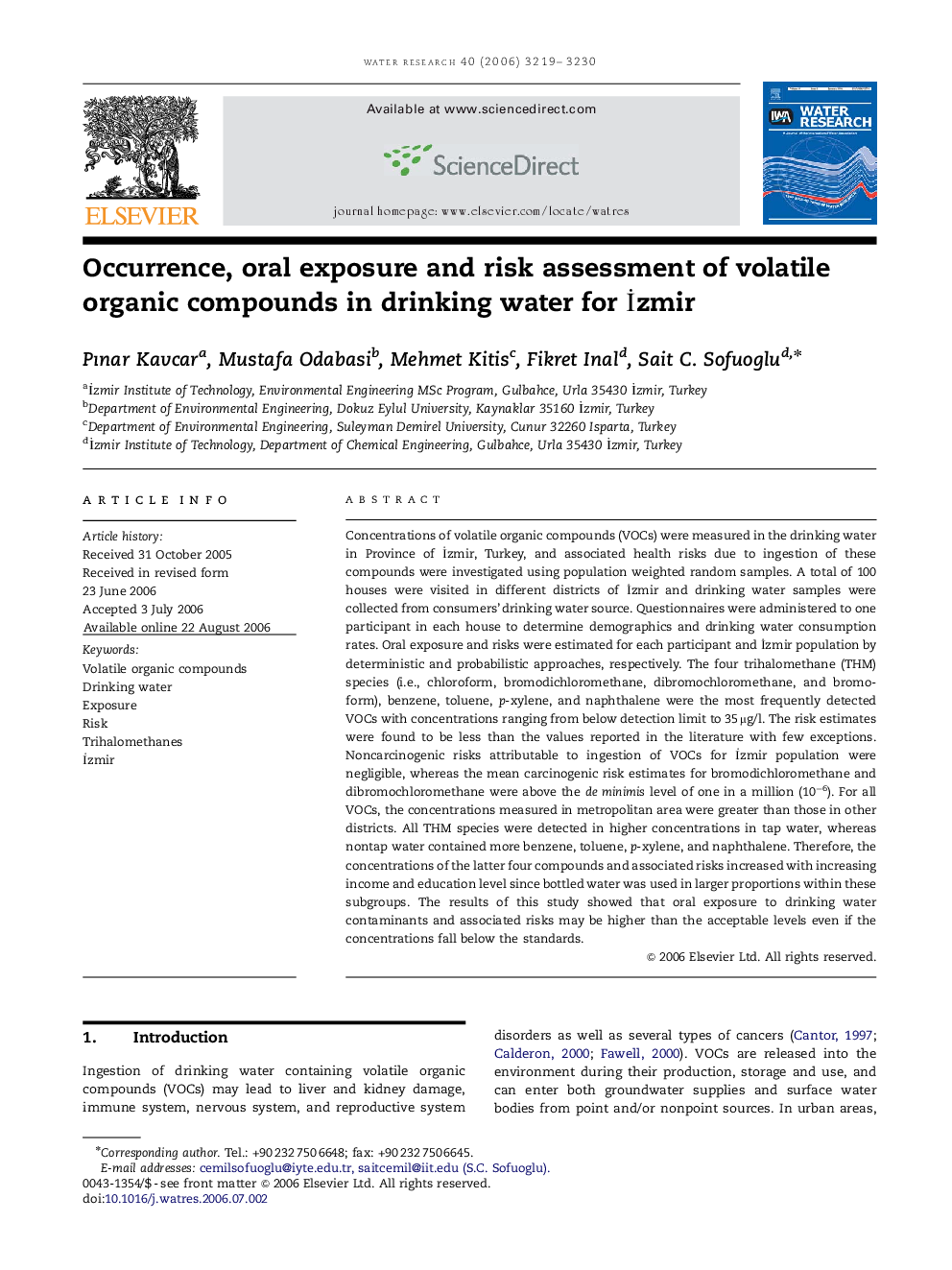| کد مقاله | کد نشریه | سال انتشار | مقاله انگلیسی | نسخه تمام متن |
|---|---|---|---|---|
| 4485933 | 1316970 | 2006 | 12 صفحه PDF | دانلود رایگان |

Concentrations of volatile organic compounds (VOCs) were measured in the drinking water in Province of İzmir, Turkey, and associated health risks due to ingestion of these compounds were investigated using population weighted random samples. A total of 100 houses were visited in different districts of İzmir and drinking water samples were collected from consumers’ drinking water source. Questionnaires were administered to one participant in each house to determine demographics and drinking water consumption rates. Oral exposure and risks were estimated for each participant and İzmir population by deterministic and probabilistic approaches, respectively. The four trihalomethane (THM) species (i.e., chloroform, bromodichloromethane, dibromochloromethane, and bromoform), benzene, toluene, p-xylene, and naphthalene were the most frequently detected VOCs with concentrations ranging from below detection limit to 35 μg/l. The risk estimates were found to be less than the values reported in the literature with few exceptions. Noncarcinogenic risks attributable to ingestion of VOCs for İzmir population were negligible, whereas the mean carcinogenic risk estimates for bromodichloromethane and dibromochloromethane were above the de minimis level of one in a million (10−6). For all VOCs, the concentrations measured in metropolitan area were greater than those in other districts. All THM species were detected in higher concentrations in tap water, whereas nontap water contained more benzene, toluene, p-xylene, and naphthalene. Therefore, the concentrations of the latter four compounds and associated risks increased with increasing income and education level since bottled water was used in larger proportions within these subgroups. The results of this study showed that oral exposure to drinking water contaminants and associated risks may be higher than the acceptable levels even if the concentrations fall below the standards.
Journal: Water Research - Volume 40, Issue 17, October 2006, Pages 3219–3230